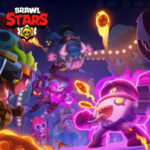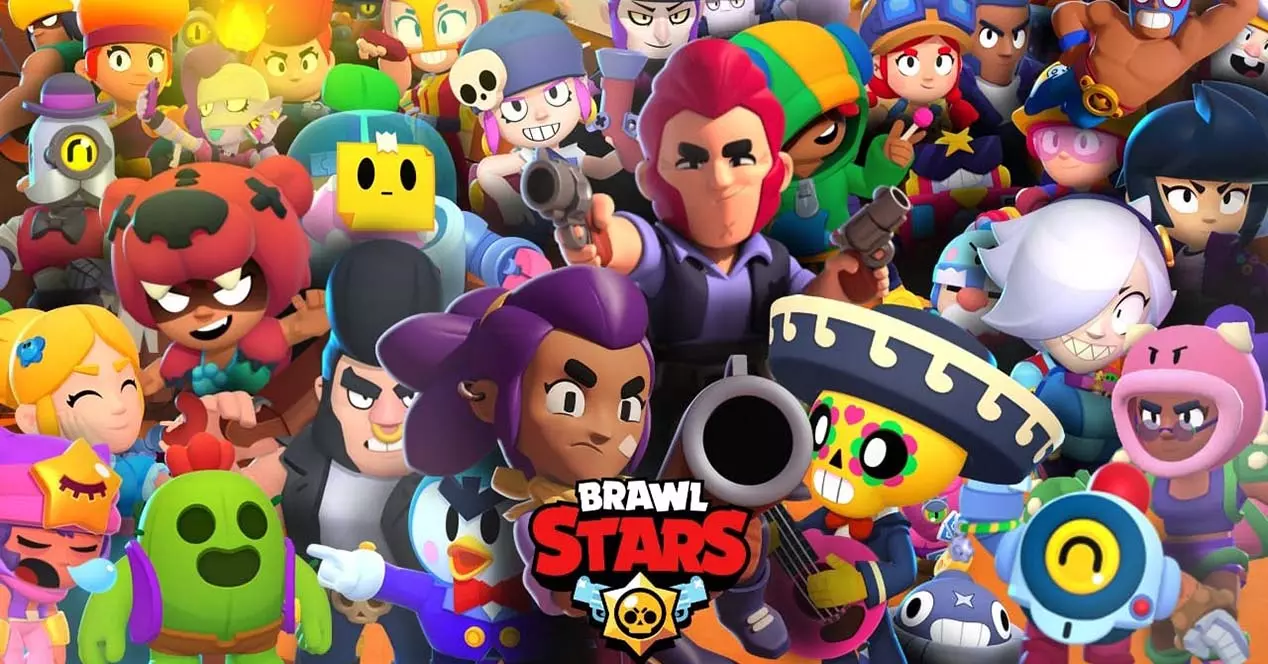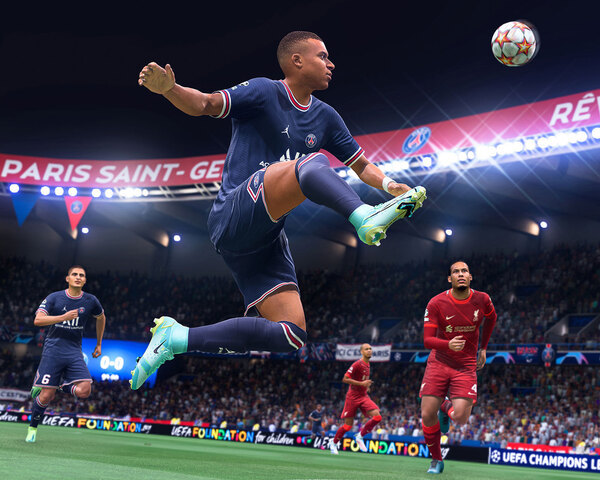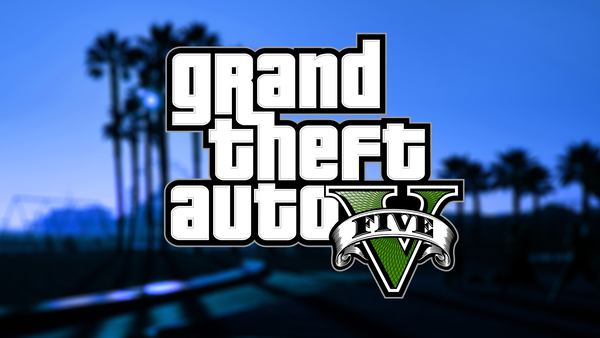Advertisement
Popular Now
Roblox has become a massive digital playground where developers create and players engage with millions of games, known as "experiences." However, for developers seeking to monetize their games, understanding Roblox's monetization model can be challenging. This article dives into the mechanics and strategies behind monetization on Roblox, addressing the benefits, challenges, and limitations developers face as they try to generate revenue within the Roblox economy.
The Roblox Economy: An Overview
Monetization within Roblox largely revolves around Robux, the platform's virtual currency. Developers can earn Robux through sales of in-game items, passes, and other monetized features, which can be converted into real-world currency through Roblox's Developer Exchange Program (DevEx). Robux is essential for both developers and players, as it allows developers to invest in marketing and asset creation, while players use it to access exclusive content.
[caption id="attachment_1838" align="aligncenter" width="600"] Monetization within Roblox largely revolves around Robux, the platform's virtual currency[/caption]
Revenue Streams for Developers
Roblox offers several monetization methods, from game passes to developer products and premium payouts.
Game Passes
Game passes are one-time purchases that provide players with exclusive features, abilities, or perks. Since they require only a single Robux payment, they are ideal for players seeking a permanent upgrade within a game.
Developer Products
Developer products are consumables that can be purchased multiple times, like currency packs or temporary boosts. This form of monetization is continuous, generating more revenue from repeat purchases, especially in games that reward frequent engagement.
Premium Payouts
For developers whose games attract players with Roblox Premium memberships, premium payouts serve as an additional income stream. Roblox rewards developers based on the time premium players spend in their games, incentivizing the creation of engaging, replayable experiences.
Challenges in Balancing Monetization with User Experience
While monetization can be lucrative, balancing it with user experience is vital. Excessive monetization may alienate players, but insufficient revenue strategies could jeopardize a game's profitability.
Pay-to-Win Concerns
Many players are wary of games that give unfair advantages to paying users. Developers must be mindful not to create a "pay-to-win" environment, which can deter a large portion of the player base.
Striking a Balance
Successful games often provide both free-to-play enjoyment and paid content. Developers who can offer valuable enhancements without hindering free players are more likely to retain a balanced player base, encouraging organic growth and positive player feedback.
Developer Exchange Program (DevEx): Pros and Cons
Roblox’s Developer Exchange Program allows eligible developers to convert Robux into real money, making it an appealing option for game creators. However, the program has both advantages and limitations that impact a developer's revenue potential.
Benefits of DevEx
DevEx provides a tangible financial incentive for game creators, supporting their ability to turn a passion for game development into a source of income. Many developers rely on DevEx to reinvest in their games or support their livelihoods.
Limitations and Requirements
The program's conversion rate, eligibility requirements, and Robux cash-out thresholds can limit how much smaller developers earn. Many feel that the 30% marketplace fee and DevEx’s conversion rate to real currency reduces their revenue.
Managing In-Game Currency: Avoiding Inflation
In-game currency inflation is a risk when players can acquire too much currency through purchases. Developers must design their currency systems carefully to avoid devaluing their in-game economy.
Strategies to Maintain Currency Value
Setting caps on currency generation, implementing currency sinks (mechanisms that remove currency from circulation), and regularly adjusting prices can help keep a game's economy balanced and its currency valuable.
Player Retention and Monetization
Keeping players engaged is essential for any monetized game. If players lose interest, revenue drops.
[caption id="attachment_1839" align="aligncenter" width="600"]
Monetization within Roblox largely revolves around Robux, the platform's virtual currency[/caption]
Revenue Streams for Developers
Roblox offers several monetization methods, from game passes to developer products and premium payouts.
Game Passes
Game passes are one-time purchases that provide players with exclusive features, abilities, or perks. Since they require only a single Robux payment, they are ideal for players seeking a permanent upgrade within a game.
Developer Products
Developer products are consumables that can be purchased multiple times, like currency packs or temporary boosts. This form of monetization is continuous, generating more revenue from repeat purchases, especially in games that reward frequent engagement.
Premium Payouts
For developers whose games attract players with Roblox Premium memberships, premium payouts serve as an additional income stream. Roblox rewards developers based on the time premium players spend in their games, incentivizing the creation of engaging, replayable experiences.
Challenges in Balancing Monetization with User Experience
While monetization can be lucrative, balancing it with user experience is vital. Excessive monetization may alienate players, but insufficient revenue strategies could jeopardize a game's profitability.
Pay-to-Win Concerns
Many players are wary of games that give unfair advantages to paying users. Developers must be mindful not to create a "pay-to-win" environment, which can deter a large portion of the player base.
Striking a Balance
Successful games often provide both free-to-play enjoyment and paid content. Developers who can offer valuable enhancements without hindering free players are more likely to retain a balanced player base, encouraging organic growth and positive player feedback.
Developer Exchange Program (DevEx): Pros and Cons
Roblox’s Developer Exchange Program allows eligible developers to convert Robux into real money, making it an appealing option for game creators. However, the program has both advantages and limitations that impact a developer's revenue potential.
Benefits of DevEx
DevEx provides a tangible financial incentive for game creators, supporting their ability to turn a passion for game development into a source of income. Many developers rely on DevEx to reinvest in their games or support their livelihoods.
Limitations and Requirements
The program's conversion rate, eligibility requirements, and Robux cash-out thresholds can limit how much smaller developers earn. Many feel that the 30% marketplace fee and DevEx’s conversion rate to real currency reduces their revenue.
Managing In-Game Currency: Avoiding Inflation
In-game currency inflation is a risk when players can acquire too much currency through purchases. Developers must design their currency systems carefully to avoid devaluing their in-game economy.
Strategies to Maintain Currency Value
Setting caps on currency generation, implementing currency sinks (mechanisms that remove currency from circulation), and regularly adjusting prices can help keep a game's economy balanced and its currency valuable.
Player Retention and Monetization
Keeping players engaged is essential for any monetized game. If players lose interest, revenue drops.
[caption id="attachment_1839" align="aligncenter" width="600"]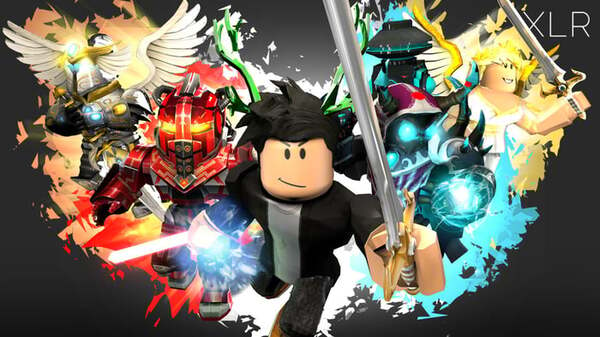 Keeping players engaged is essential for any monetized game[/caption]
Creating Engaging Content
Consistently updating the game, adding new features, and holding in-game events are effective ways to encourage players to return. Seasonal events or limited-time offers create excitement and increase the likelihood of purchases.
Incentivizing Loyalty
Rewards for logging in daily, achieving milestones, or participating in events are excellent ways to foster loyalty. Games that incentivize continuous play tend to have higher lifetime values for each player.
Handling Younger Audiences in Monetized Games
Roblox's user base includes many younger players, creating ethical considerations for monetization.
Transparent Pricing
It's essential to clearly communicate the costs of items and passes to avoid confusion, especially with younger users. Ensuring pricing is transparent reduces frustration and helps maintain a trustworthy game reputation.
Age-Appropriate Content
Keeping content appropriate for Roblox's diverse age range is critical. Games that respect age guidelines attract more players, including parents who are more likely to support purchases in a safe, family-friendly environment.
Marketing Strategies to Boost Monetization
Beyond building a great game, developers need effective marketing strategies to drive traffic.
Leveraging Roblox’s Advertising System
Roblox offers developers the ability to advertise their games within the platform. Ads can target users based on specific interests or demographics, helping developers reach their ideal audience.
Using Social Media and Community Engagement
Many developers connect with their audience on platforms like Twitter, YouTube, or Discord. Creating a strong community outside Roblox helps build player loyalty and draws new users to the game.
Roblox’s Platform Fees and Developer Profits
Roblox charges a 30% fee on every transaction. This fee structure impacts how developers price their in-game items and services to ensure profitability.
Calculating Profitable Pricing
To make a profit, developers need to consider both Roblox’s fee and DevEx conversion rates when pricing items. Many opt for tiered pricing models that offer both affordable and premium items to cater to a broader audience.
Future of Roblox Monetization
The Roblox platform continually evolves, bringing new monetization methods, features, and tools.
Emerging Trends
The potential for new revenue streams, like sponsorships or branded collaborations, could bring more opportunities for developers. Embracing innovative monetization strategies will be essential for future success.
Remaining Adaptable
The game development landscape changes rapidly. Staying updated on Roblox’s guidelines, policies, and best practices helps developers capitalize on trends while maintaining compliance.
[caption id="attachment_1840" align="aligncenter" width="600"]
Keeping players engaged is essential for any monetized game[/caption]
Creating Engaging Content
Consistently updating the game, adding new features, and holding in-game events are effective ways to encourage players to return. Seasonal events or limited-time offers create excitement and increase the likelihood of purchases.
Incentivizing Loyalty
Rewards for logging in daily, achieving milestones, or participating in events are excellent ways to foster loyalty. Games that incentivize continuous play tend to have higher lifetime values for each player.
Handling Younger Audiences in Monetized Games
Roblox's user base includes many younger players, creating ethical considerations for monetization.
Transparent Pricing
It's essential to clearly communicate the costs of items and passes to avoid confusion, especially with younger users. Ensuring pricing is transparent reduces frustration and helps maintain a trustworthy game reputation.
Age-Appropriate Content
Keeping content appropriate for Roblox's diverse age range is critical. Games that respect age guidelines attract more players, including parents who are more likely to support purchases in a safe, family-friendly environment.
Marketing Strategies to Boost Monetization
Beyond building a great game, developers need effective marketing strategies to drive traffic.
Leveraging Roblox’s Advertising System
Roblox offers developers the ability to advertise their games within the platform. Ads can target users based on specific interests or demographics, helping developers reach their ideal audience.
Using Social Media and Community Engagement
Many developers connect with their audience on platforms like Twitter, YouTube, or Discord. Creating a strong community outside Roblox helps build player loyalty and draws new users to the game.
Roblox’s Platform Fees and Developer Profits
Roblox charges a 30% fee on every transaction. This fee structure impacts how developers price their in-game items and services to ensure profitability.
Calculating Profitable Pricing
To make a profit, developers need to consider both Roblox’s fee and DevEx conversion rates when pricing items. Many opt for tiered pricing models that offer both affordable and premium items to cater to a broader audience.
Future of Roblox Monetization
The Roblox platform continually evolves, bringing new monetization methods, features, and tools.
Emerging Trends
The potential for new revenue streams, like sponsorships or branded collaborations, could bring more opportunities for developers. Embracing innovative monetization strategies will be essential for future success.
Remaining Adaptable
The game development landscape changes rapidly. Staying updated on Roblox’s guidelines, policies, and best practices helps developers capitalize on trends while maintaining compliance.
[caption id="attachment_1840" align="aligncenter" width="600"]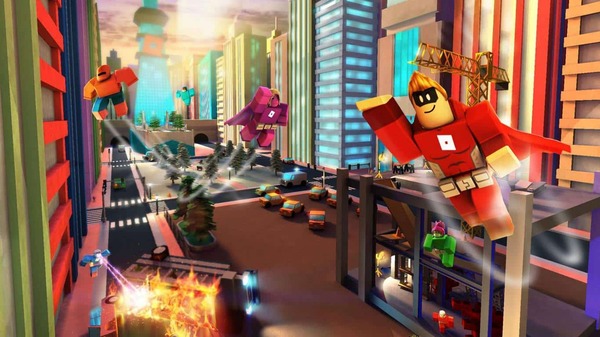 The game development landscape changes rapidly. Staying updated on Roblox’s guidelines, policies, and best practices[/caption]
Conclusion
Monetization on Roblox requires a careful balance between profit and player satisfaction. Developers who understand the intricacies of Robux, DevEx, and the platform’s user base can create rewarding and profitable games. Ultimately, success in Roblox's monetization landscape requires adaptability, ethical considerations, and a commitment to player engagement.
The game development landscape changes rapidly. Staying updated on Roblox’s guidelines, policies, and best practices[/caption]
Conclusion
Monetization on Roblox requires a careful balance between profit and player satisfaction. Developers who understand the intricacies of Robux, DevEx, and the platform’s user base can create rewarding and profitable games. Ultimately, success in Roblox's monetization landscape requires adaptability, ethical considerations, and a commitment to player engagement.
 Monetization within Roblox largely revolves around Robux, the platform's virtual currency[/caption]
Revenue Streams for Developers
Roblox offers several monetization methods, from game passes to developer products and premium payouts.
Game Passes
Game passes are one-time purchases that provide players with exclusive features, abilities, or perks. Since they require only a single Robux payment, they are ideal for players seeking a permanent upgrade within a game.
Developer Products
Developer products are consumables that can be purchased multiple times, like currency packs or temporary boosts. This form of monetization is continuous, generating more revenue from repeat purchases, especially in games that reward frequent engagement.
Premium Payouts
For developers whose games attract players with Roblox Premium memberships, premium payouts serve as an additional income stream. Roblox rewards developers based on the time premium players spend in their games, incentivizing the creation of engaging, replayable experiences.
Challenges in Balancing Monetization with User Experience
While monetization can be lucrative, balancing it with user experience is vital. Excessive monetization may alienate players, but insufficient revenue strategies could jeopardize a game's profitability.
Pay-to-Win Concerns
Many players are wary of games that give unfair advantages to paying users. Developers must be mindful not to create a "pay-to-win" environment, which can deter a large portion of the player base.
Striking a Balance
Successful games often provide both free-to-play enjoyment and paid content. Developers who can offer valuable enhancements without hindering free players are more likely to retain a balanced player base, encouraging organic growth and positive player feedback.
Developer Exchange Program (DevEx): Pros and Cons
Roblox’s Developer Exchange Program allows eligible developers to convert Robux into real money, making it an appealing option for game creators. However, the program has both advantages and limitations that impact a developer's revenue potential.
Benefits of DevEx
DevEx provides a tangible financial incentive for game creators, supporting their ability to turn a passion for game development into a source of income. Many developers rely on DevEx to reinvest in their games or support their livelihoods.
Limitations and Requirements
The program's conversion rate, eligibility requirements, and Robux cash-out thresholds can limit how much smaller developers earn. Many feel that the 30% marketplace fee and DevEx’s conversion rate to real currency reduces their revenue.
Managing In-Game Currency: Avoiding Inflation
In-game currency inflation is a risk when players can acquire too much currency through purchases. Developers must design their currency systems carefully to avoid devaluing their in-game economy.
Strategies to Maintain Currency Value
Setting caps on currency generation, implementing currency sinks (mechanisms that remove currency from circulation), and regularly adjusting prices can help keep a game's economy balanced and its currency valuable.
Player Retention and Monetization
Keeping players engaged is essential for any monetized game. If players lose interest, revenue drops.
[caption id="attachment_1839" align="aligncenter" width="600"]
Monetization within Roblox largely revolves around Robux, the platform's virtual currency[/caption]
Revenue Streams for Developers
Roblox offers several monetization methods, from game passes to developer products and premium payouts.
Game Passes
Game passes are one-time purchases that provide players with exclusive features, abilities, or perks. Since they require only a single Robux payment, they are ideal for players seeking a permanent upgrade within a game.
Developer Products
Developer products are consumables that can be purchased multiple times, like currency packs or temporary boosts. This form of monetization is continuous, generating more revenue from repeat purchases, especially in games that reward frequent engagement.
Premium Payouts
For developers whose games attract players with Roblox Premium memberships, premium payouts serve as an additional income stream. Roblox rewards developers based on the time premium players spend in their games, incentivizing the creation of engaging, replayable experiences.
Challenges in Balancing Monetization with User Experience
While monetization can be lucrative, balancing it with user experience is vital. Excessive monetization may alienate players, but insufficient revenue strategies could jeopardize a game's profitability.
Pay-to-Win Concerns
Many players are wary of games that give unfair advantages to paying users. Developers must be mindful not to create a "pay-to-win" environment, which can deter a large portion of the player base.
Striking a Balance
Successful games often provide both free-to-play enjoyment and paid content. Developers who can offer valuable enhancements without hindering free players are more likely to retain a balanced player base, encouraging organic growth and positive player feedback.
Developer Exchange Program (DevEx): Pros and Cons
Roblox’s Developer Exchange Program allows eligible developers to convert Robux into real money, making it an appealing option for game creators. However, the program has both advantages and limitations that impact a developer's revenue potential.
Benefits of DevEx
DevEx provides a tangible financial incentive for game creators, supporting their ability to turn a passion for game development into a source of income. Many developers rely on DevEx to reinvest in their games or support their livelihoods.
Limitations and Requirements
The program's conversion rate, eligibility requirements, and Robux cash-out thresholds can limit how much smaller developers earn. Many feel that the 30% marketplace fee and DevEx’s conversion rate to real currency reduces their revenue.
Managing In-Game Currency: Avoiding Inflation
In-game currency inflation is a risk when players can acquire too much currency through purchases. Developers must design their currency systems carefully to avoid devaluing their in-game economy.
Strategies to Maintain Currency Value
Setting caps on currency generation, implementing currency sinks (mechanisms that remove currency from circulation), and regularly adjusting prices can help keep a game's economy balanced and its currency valuable.
Player Retention and Monetization
Keeping players engaged is essential for any monetized game. If players lose interest, revenue drops.
[caption id="attachment_1839" align="aligncenter" width="600"] Keeping players engaged is essential for any monetized game[/caption]
Creating Engaging Content
Consistently updating the game, adding new features, and holding in-game events are effective ways to encourage players to return. Seasonal events or limited-time offers create excitement and increase the likelihood of purchases.
Incentivizing Loyalty
Rewards for logging in daily, achieving milestones, or participating in events are excellent ways to foster loyalty. Games that incentivize continuous play tend to have higher lifetime values for each player.
Handling Younger Audiences in Monetized Games
Roblox's user base includes many younger players, creating ethical considerations for monetization.
Transparent Pricing
It's essential to clearly communicate the costs of items and passes to avoid confusion, especially with younger users. Ensuring pricing is transparent reduces frustration and helps maintain a trustworthy game reputation.
Age-Appropriate Content
Keeping content appropriate for Roblox's diverse age range is critical. Games that respect age guidelines attract more players, including parents who are more likely to support purchases in a safe, family-friendly environment.
Marketing Strategies to Boost Monetization
Beyond building a great game, developers need effective marketing strategies to drive traffic.
Leveraging Roblox’s Advertising System
Roblox offers developers the ability to advertise their games within the platform. Ads can target users based on specific interests or demographics, helping developers reach their ideal audience.
Using Social Media and Community Engagement
Many developers connect with their audience on platforms like Twitter, YouTube, or Discord. Creating a strong community outside Roblox helps build player loyalty and draws new users to the game.
Roblox’s Platform Fees and Developer Profits
Roblox charges a 30% fee on every transaction. This fee structure impacts how developers price their in-game items and services to ensure profitability.
Calculating Profitable Pricing
To make a profit, developers need to consider both Roblox’s fee and DevEx conversion rates when pricing items. Many opt for tiered pricing models that offer both affordable and premium items to cater to a broader audience.
Future of Roblox Monetization
The Roblox platform continually evolves, bringing new monetization methods, features, and tools.
Emerging Trends
The potential for new revenue streams, like sponsorships or branded collaborations, could bring more opportunities for developers. Embracing innovative monetization strategies will be essential for future success.
Remaining Adaptable
The game development landscape changes rapidly. Staying updated on Roblox’s guidelines, policies, and best practices helps developers capitalize on trends while maintaining compliance.
[caption id="attachment_1840" align="aligncenter" width="600"]
Keeping players engaged is essential for any monetized game[/caption]
Creating Engaging Content
Consistently updating the game, adding new features, and holding in-game events are effective ways to encourage players to return. Seasonal events or limited-time offers create excitement and increase the likelihood of purchases.
Incentivizing Loyalty
Rewards for logging in daily, achieving milestones, or participating in events are excellent ways to foster loyalty. Games that incentivize continuous play tend to have higher lifetime values for each player.
Handling Younger Audiences in Monetized Games
Roblox's user base includes many younger players, creating ethical considerations for monetization.
Transparent Pricing
It's essential to clearly communicate the costs of items and passes to avoid confusion, especially with younger users. Ensuring pricing is transparent reduces frustration and helps maintain a trustworthy game reputation.
Age-Appropriate Content
Keeping content appropriate for Roblox's diverse age range is critical. Games that respect age guidelines attract more players, including parents who are more likely to support purchases in a safe, family-friendly environment.
Marketing Strategies to Boost Monetization
Beyond building a great game, developers need effective marketing strategies to drive traffic.
Leveraging Roblox’s Advertising System
Roblox offers developers the ability to advertise their games within the platform. Ads can target users based on specific interests or demographics, helping developers reach their ideal audience.
Using Social Media and Community Engagement
Many developers connect with their audience on platforms like Twitter, YouTube, or Discord. Creating a strong community outside Roblox helps build player loyalty and draws new users to the game.
Roblox’s Platform Fees and Developer Profits
Roblox charges a 30% fee on every transaction. This fee structure impacts how developers price their in-game items and services to ensure profitability.
Calculating Profitable Pricing
To make a profit, developers need to consider both Roblox’s fee and DevEx conversion rates when pricing items. Many opt for tiered pricing models that offer both affordable and premium items to cater to a broader audience.
Future of Roblox Monetization
The Roblox platform continually evolves, bringing new monetization methods, features, and tools.
Emerging Trends
The potential for new revenue streams, like sponsorships or branded collaborations, could bring more opportunities for developers. Embracing innovative monetization strategies will be essential for future success.
Remaining Adaptable
The game development landscape changes rapidly. Staying updated on Roblox’s guidelines, policies, and best practices helps developers capitalize on trends while maintaining compliance.
[caption id="attachment_1840" align="aligncenter" width="600"] The game development landscape changes rapidly. Staying updated on Roblox’s guidelines, policies, and best practices[/caption]
Conclusion
Monetization on Roblox requires a careful balance between profit and player satisfaction. Developers who understand the intricacies of Robux, DevEx, and the platform’s user base can create rewarding and profitable games. Ultimately, success in Roblox's monetization landscape requires adaptability, ethical considerations, and a commitment to player engagement.
The game development landscape changes rapidly. Staying updated on Roblox’s guidelines, policies, and best practices[/caption]
Conclusion
Monetization on Roblox requires a careful balance between profit and player satisfaction. Developers who understand the intricacies of Robux, DevEx, and the platform’s user base can create rewarding and profitable games. Ultimately, success in Roblox's monetization landscape requires adaptability, ethical considerations, and a commitment to player engagement. 

